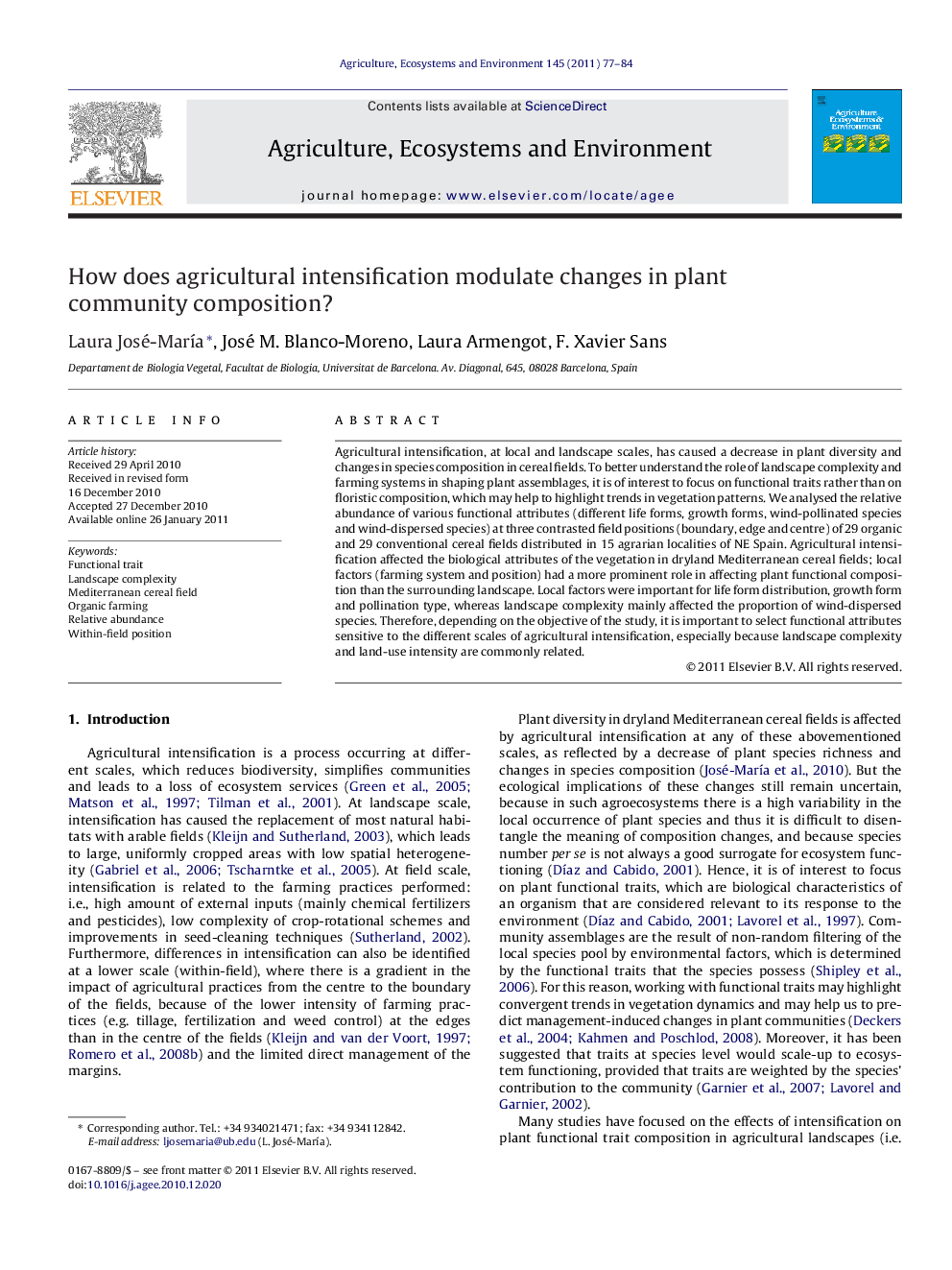| Article ID | Journal | Published Year | Pages | File Type |
|---|---|---|---|---|
| 2414589 | Agriculture, Ecosystems & Environment | 2011 | 8 Pages |
Agricultural intensification, at local and landscape scales, has caused a decrease in plant diversity and changes in species composition in cereal fields. To better understand the role of landscape complexity and farming systems in shaping plant assemblages, it is of interest to focus on functional traits rather than on floristic composition, which may help to highlight trends in vegetation patterns. We analysed the relative abundance of various functional attributes (different life forms, growth forms, wind-pollinated species and wind-dispersed species) at three contrasted field positions (boundary, edge and centre) of 29 organic and 29 conventional cereal fields distributed in 15 agrarian localities of NE Spain. Agricultural intensification affected the biological attributes of the vegetation in dryland Mediterranean cereal fields; local factors (farming system and position) had a more prominent role in affecting plant functional composition than the surrounding landscape. Local factors were important for life form distribution, growth form and pollination type, whereas landscape complexity mainly affected the proportion of wind-dispersed species. Therefore, depending on the objective of the study, it is important to select functional attributes sensitive to the different scales of agricultural intensification, especially because landscape complexity and land-use intensity are commonly related.
Research highlights▶ Effects of agricultural intensification on plant functional traits in cereal fields. ▶ Major role of farming system and within-field position than landscape complexity. ▶ Life form abundance distribution responds to disturbance gradient within fields. ▶ Farming system affects growth form and pollination vector distributions. ▶ Wind-dispersed species are favoured in simple landscapes, which have more open areas.
